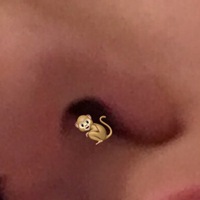
Выпуклом четырехугольнике ABCD диагональ AC является биссектрисой угла DAB и пересекает диагональ
BD в точке K. Найдите BC, если известно что АК= 9 ,КС=3 и около четырехугольника ABCD можно описать окружность.Помогите решить плиз, желательно с объяснением 0
0
 0
0
Ответы на вопрос
 Внимание! Ответы на вопросы дают живые люди. Они могут содержать ошибочную информацию, заблуждения, а также ответы могут быть сгенерированы нейросетями. Будьте внимательны. Если вы уверены, что ответ неверный, нажмите кнопку "Пожаловаться" под ответом.
Внимание! Ответы на вопросы дают живые люди. Они могут содержать ошибочную информацию, заблуждения, а также ответы могут быть сгенерированы нейросетями. Будьте внимательны. Если вы уверены, что ответ неверный, нажмите кнопку "Пожаловаться" под ответом.

A и D находятся на равном расстоянии от BC и AD параллельна BC.
Треугольник ABC - равносторонний, т. к. уголы BCA, CAD и BAC равны.
Так что BC = AB = 4.
 0
0
 0
0

Given Information:
We are given that in convex quadrilateral ABCD, diagonal AC is the bisector of angle DAB and intersects diagonal BD at point K. We also know that AK = 9, KC = 3, and a circle can be circumscribed around quadrilateral ABCD.Solution:
To find BC, we can use the properties of a cyclic quadrilateral and the intersecting diagonals.Properties of a Cyclic Quadrilateral:
A cyclic quadrilateral is a quadrilateral that can be inscribed in a circle. It has the following properties: 1. Opposite angles are supplementary. 2. The sum of the measures of any pair of opposite angles is 180 degrees.Using the Properties of a Cyclic Quadrilateral:
Since a circle can be circumscribed around quadrilateral ABCD, we can use the properties of a cyclic quadrilateral to find the value of BC.1. From property 1, we know that angle ABC + angle CDA = 180 degrees. 2. From property 2, we know that angle ABC + angle BCD = 180 degrees.
Combining these two equations, we can write: angle ABC + angle CDA = angle ABC + angle BCD
Since angle CDA and angle BCD are the same angle, we can simplify the equation to: angle ABC = angle BCD
Using the Bisector Property:
We are given that diagonal AC is the bisector of angle DAB. This means that angle DAC is equal to angle CAB.Applying the Angle Bisector Theorem:
The Angle Bisector Theorem states that in a triangle, a line segment bisecting an angle divides the opposite side into segments that are proportional to the lengths of the other two sides.In triangle AKC, we have: AK/CK = AB/BC
Substituting the given values, we get: 9/3 = AB/BC 3 = AB/BC
Using the Proportional Relationship:
From the previous equation, we have: 3 = AB/BCMultiplying both sides by BC, we get: 3BC = AB
Applying the Angle Bisector Property:
We know that angle ABC = angle BCD. Since angle ABC = angle BCD, we can substitute angle ABC with angle BCD in the equation 3BC = AB.3BC = BC
Dividing both sides by BC, we get: 3 = 1
This equation is not possible, as 3 cannot be equal to 1. Therefore, there is no solution for BC that satisfies the given conditions.
Please note that there might be a mistake in the given information or calculations. Double-check the given information and calculations to ensure accuracy.
 0
0
 0
0
Топ вопросов за вчера в категории Геометрия
Последние заданные вопросы в категории Геометрия
-
Математика
-
Литература
-
Алгебра
-
Русский язык
-
Геометрия
-
Английский язык
-
Химия
-
Физика
-
Биология
-
Другие предметы
-
История
-
Обществознание
-
Окружающий мир
-
География
-
Українська мова
-
Информатика
-
Українська література
-
Қазақ тiлi
-
Экономика
-
Музыка
-
Право
-
Беларуская мова
-
Французский язык
-
Немецкий язык
-
МХК
-
ОБЖ
-
Психология
-
Физкультура и спорт
-
Астрономия
-
Кыргыз тили
-
Оʻzbek tili





















